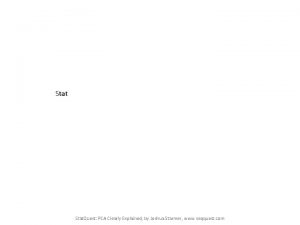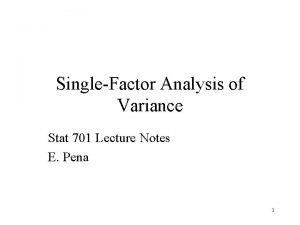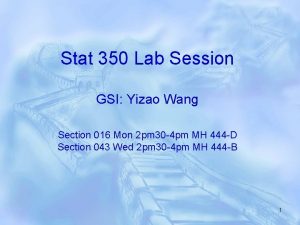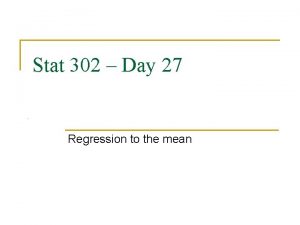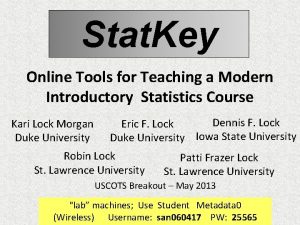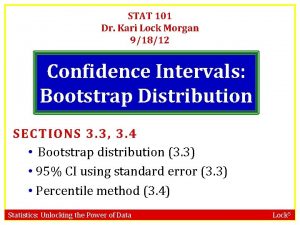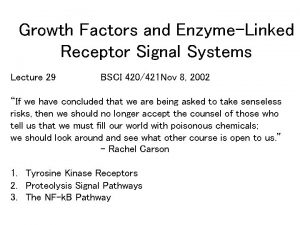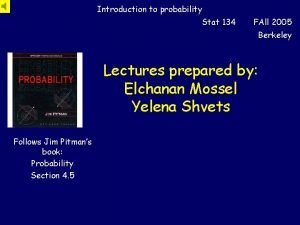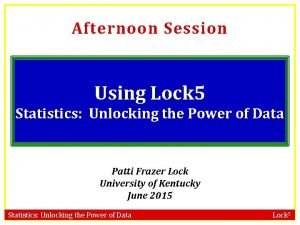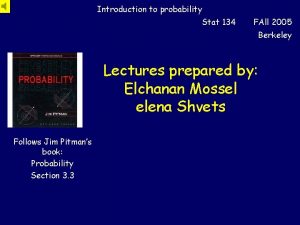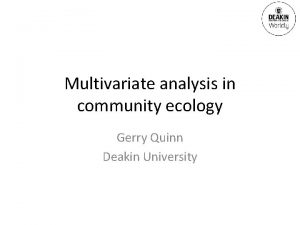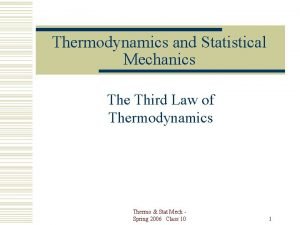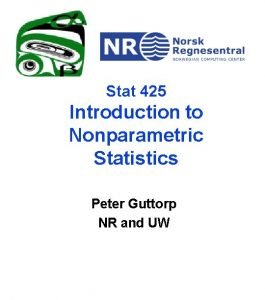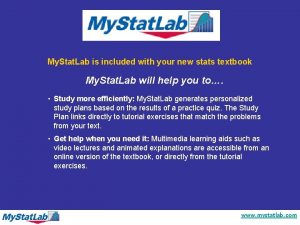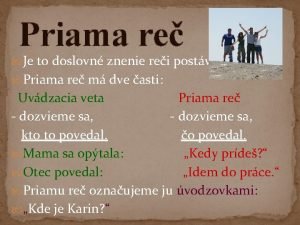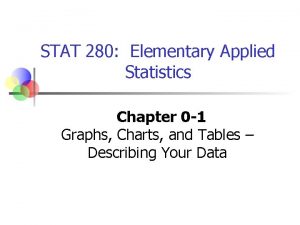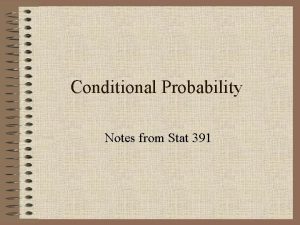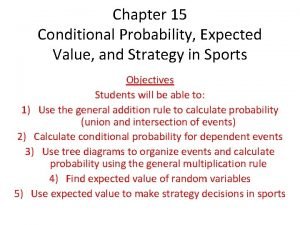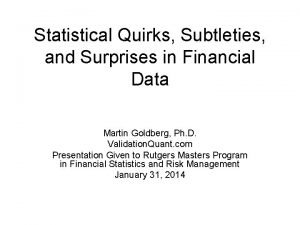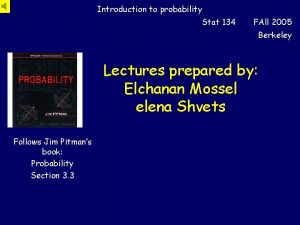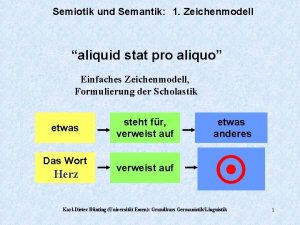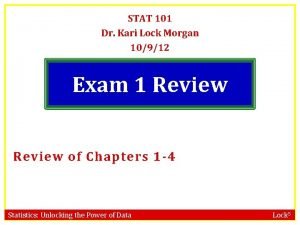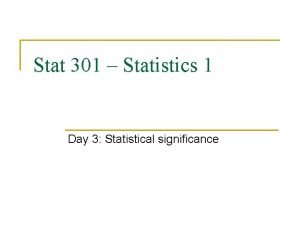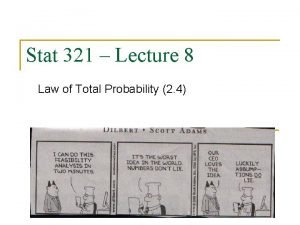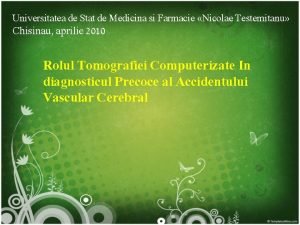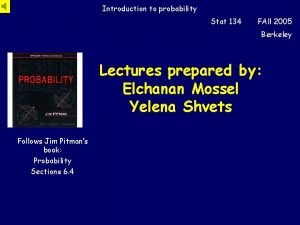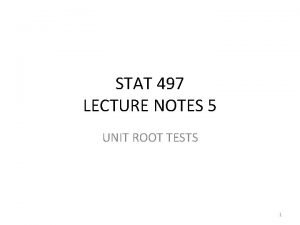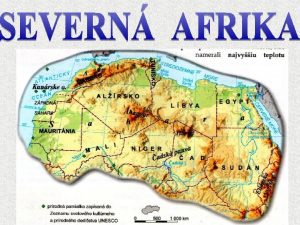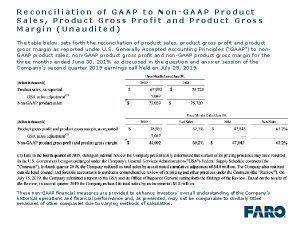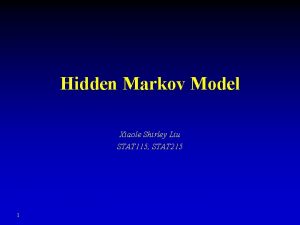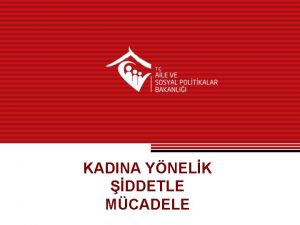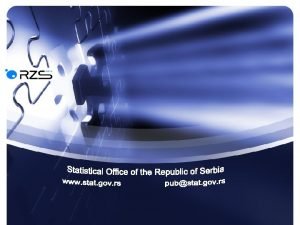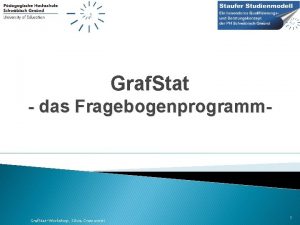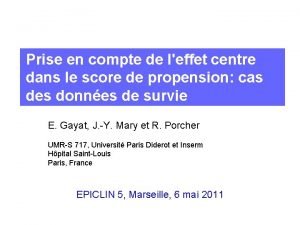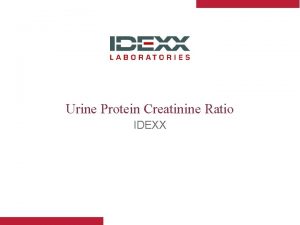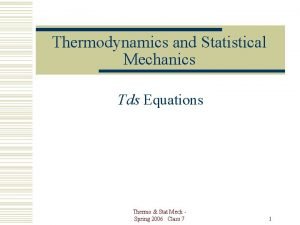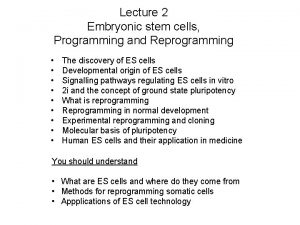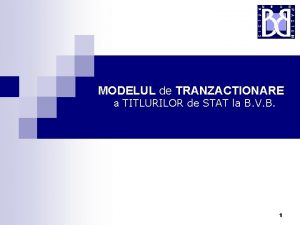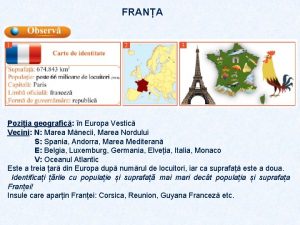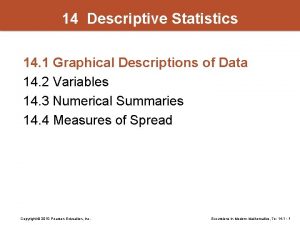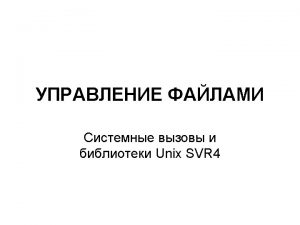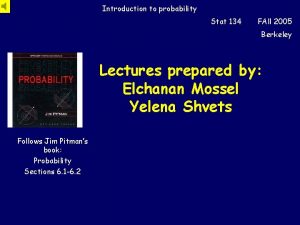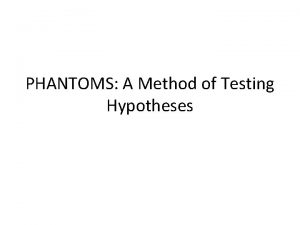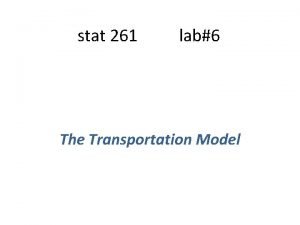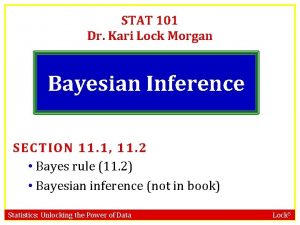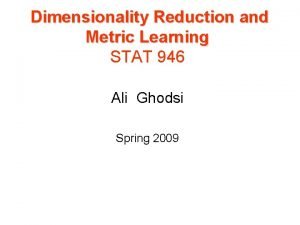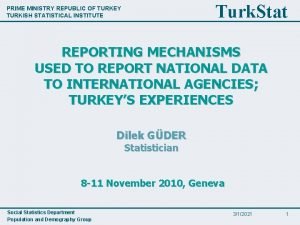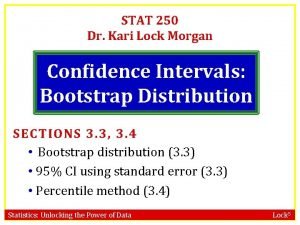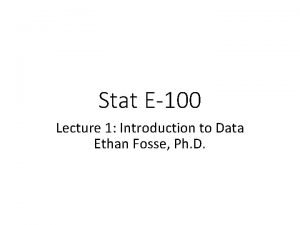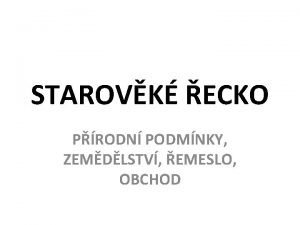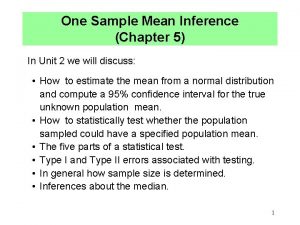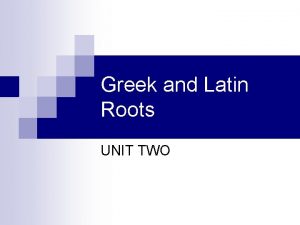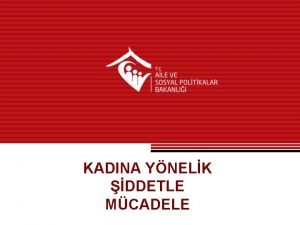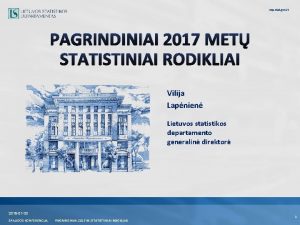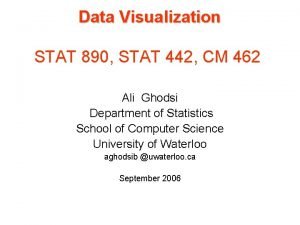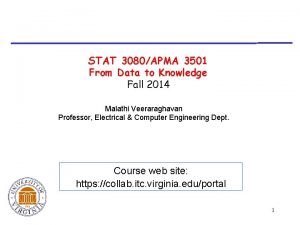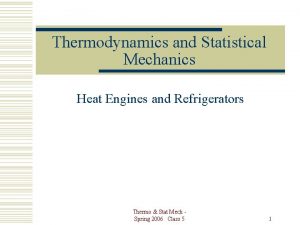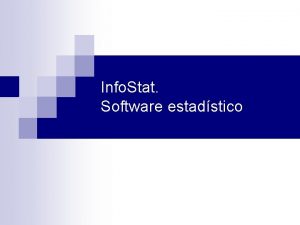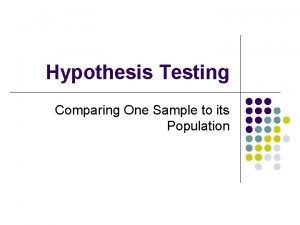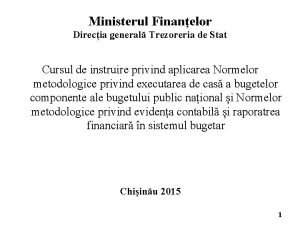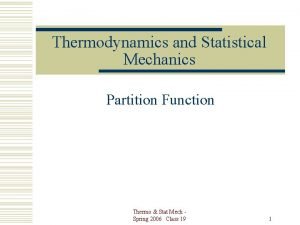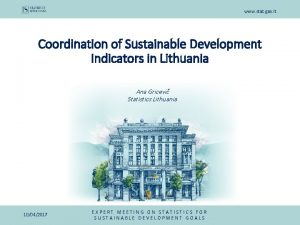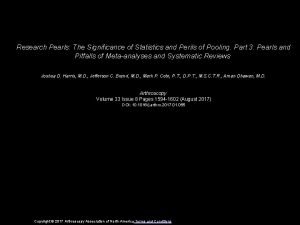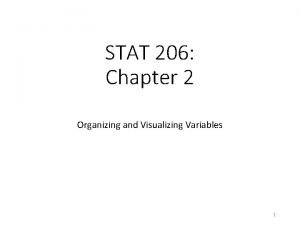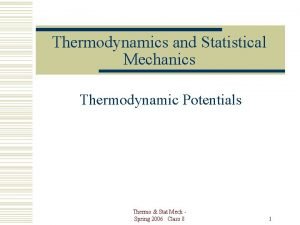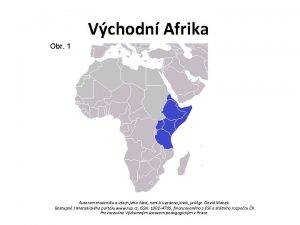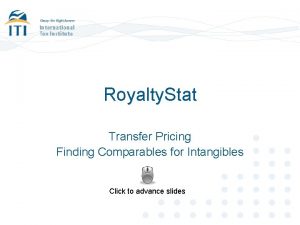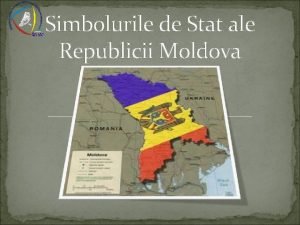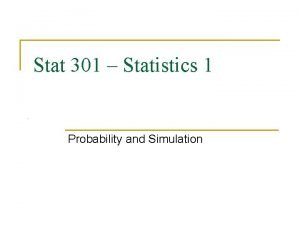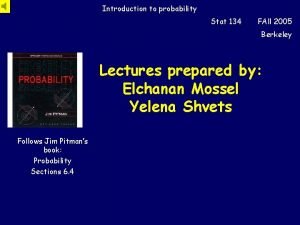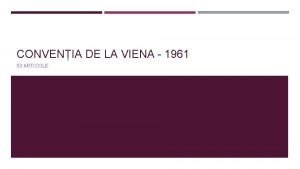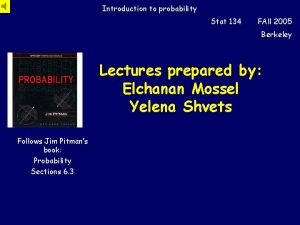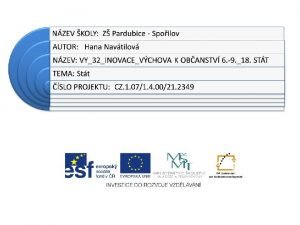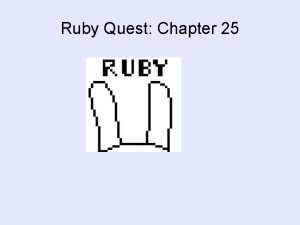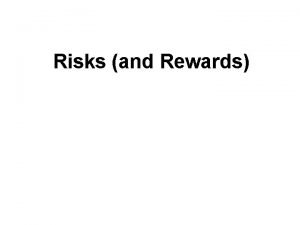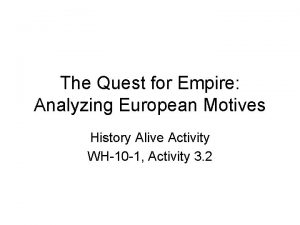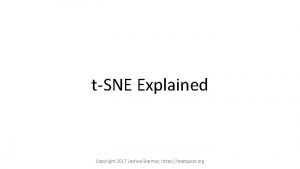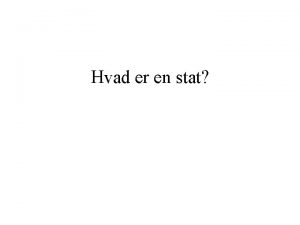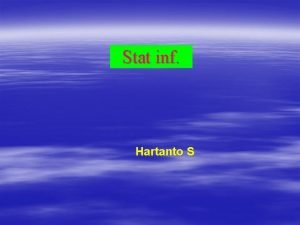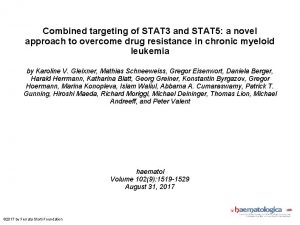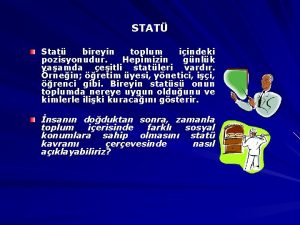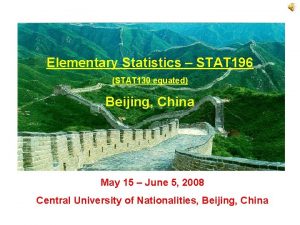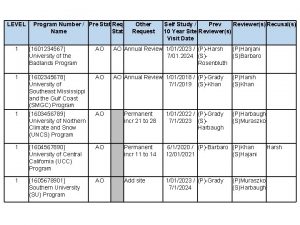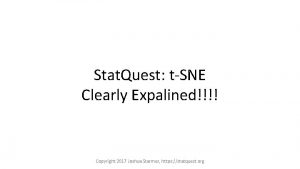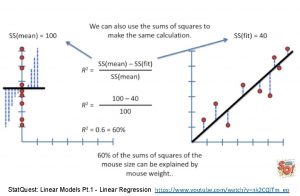Stat Quest http www statquest com Stat Quest





















































































































- Slides: 117

Stat. Quest! http: //www. statquest. com

Stat. Quest! http: //www. statquest. com

Stat. Quest! http: //www. statquest. com

Heatmaps… • You’ve seen them before…. http: //www. statquest. com

Here’s a heatmap! The rows are genes. The columns are RNA-seq samples. http: //www. statquest. com

Here’s a heatmap! The rows are genes. The columns are RNA-seq samples. This data has been modified in 2 ways so that we can gain some insights from it. http: //www. statquest. com

Here’s a heatmap! The rows are genes. The columns are RNA-seq samples. This data has been modified in 2 ways so that we can gain some insights from it. 1) The relative abundances have been scaled. In this case, this was done on per gene basis (other heatmaps scale all the genes at once). This makes it easy to see that sample X has more/less of gene Y than sample Z. http: //www. statquest. com

Here’s a heatmap! The rows are genes. The columns are RNA-seq samples. This data has been modified in 2 ways so that we can gain some insights from it. 1) The relative abundances have been scaled. In this case, this was done on per gene basis (other heatmaps scale all the genes at once). This makes it easy to see that sample X has more/less of gene Y than sample Z. It’s easy to see that Sample 1 expresses this gene more than the others. http: //www. statquest. com

Here’s a heatmap! The rows are genes. The columns are RNA-seq samples. This data has been modified in 2 ways so that we can gain some insights from it. 1) The relative abundances have been scaled. In this case, this was done on per gene basis (other heatmaps scale all the genes at once). This makes it easy to see that sample X has more/less of gene Y than sample Z. It’s easy to see that Sample 1 expresses this gene more than the others. However, this specific scaling means we can’t compare across genes. The dark red bar in the Sample 1 for this gene doesn’t mean that Sample 1 transcribes it more than other genes, just other samples. http: //www. statquest. com

Here’s a heatmap! The rows are genes. The columns are RNA-seq samples. This data has been modified in 2 ways so that we can gain some insights from it. 1) The relative abundances have been scaled. In this case, this was done on per gene basis (other heatmaps scale all the genes at once). This makes it easy to see that sample X has more/less of gene Y than sample Z. 2) The rows/genes have been grouped according to “similarity”. http: //www. statquest. com

These genes are transcribed most in the 2 nd sample (and least in the 4 th sample). http: //www. statquest. com

These genes are transcribed most in the 2 nd sample (and least in the 4 th sample). These genes are transcribed most in the 1 st sample (and least in the 4 th sample). http: //www. statquest. com

These genes are transcribed most in the 2 nd sample (and least in the 4 th sample). These genes are transcribed most in the 1 st sample (and least in the 4 th sample). These genes are transcribe most in the 2 nd sample (and least in the 3 rd sample). http: //www. statquest. com

The “clustering” isn’t by chance, but due to a computer program that tries to put “similar” things close together. http: //www. statquest. com

Without clustering the data would look like this… http: //www. statquest. com

Without clustering or scaling, the data would look like this!!!! http: //www. statquest. com

Without clustering or scaling, the data would look like this!!!! Notice that one gene is highly transcribed compared to the others. It’s an outlier… http: //www. statquest. com

Another example… http: //www. statquest. com

This heatmap has been scaled and clustered. The scaling is “global” – not per row/gene – but for all rows/genes. http: //www. statquest. com

This heatmap has been scaled and clustered. We can use “global” scaling because we don’t have an outlier like we did in the last dataset. The scaling is “global” – not per row/gene – but for all rows/genes. http: //www. statquest. com

This heatmap has been scaled and clustered. The scaling is “global” – not per row/gene – but for all rows/genes. The clustering is by column/sample AND by row/gene. http: //www. statquest. com

These columns/samples cluster together. This heatmap has been scaled and clustered. The scaling is “global” – not per row/gene – but for all rows/genes. The clustering is by column/sample AND by row/gene. http: //www. statquest. com

These columns/samples cluster together. This heatmap has been scaled and clustered. The scaling is “global” – not per row/gene – but for all rows/genes. The clustering is by column/sample AND by row/gene. These rows/genes cluster together. http: //www. statquest. com

Without clustering http: //www. statquest. com

Without clustering or scaling http: //www. statquest. com

A quick aside. . http: //www. statquest. com

What if we had used global scaling with the first heatmap? http: //www. statquest. com

Now using global scaling… The outlier skews the scale so much it is impossible to see the other genes. http: //www. statquest. com

Now using global scaling… Also, notice that the clustering changes and the genes have a new order. The outlier skews the scale so much it is impossible to see the other genes. http: //www. statquest. com

Scaling can affect two things: Nowbrightly using global scaling… 1) How colored the genes are and whether you can compare between them. 2) The clustering. Also, notice that the clustering changes and the genes have a new order. The outlier skews the scale so much it is impossible to see the other genes. http: //www. statquest. com

… now back to the action. http: //www. statquest. com

How to scale data… • Regardless of whether you do it by gene or globally, the most common method is… nameless! I hate to coin a new term, but let’s call it “Z-Score Scaling” because, technically, it converts the data to “Z-scores” http: //www. statquest. com

Converting to Z-Scores (i. e. Z-score scaling) RNA-seq read counts from 6 samples. A B C 0 5 http: //www. statquest. com 10 D E F 15 20 25

Converting to Z-Scores (i. e. Z-score scaling) RNA-seq read counts from 6 samples. A B C 0 5 Step 1) Calculate the mean (16. 5) http: //www. statquest. com 10 D E F 15 20 25

Converting to Z-Scores (i. e. Z-score scaling) A B C -25 -20 -15 -10 -5 D E F 0 5 Step 1) Calculate the mean (16. 5) Step 2) Subtract the mean from each value http: //www. statquest. com 10 15 20 25

Converting to Z-Scores (i. e. Z-score scaling) A B C -25 -20 -15 -10 -5 D E F 0 5 10 15 20 25 This centers the data around 0. Step 1) Calculate the mean (16. 5) Step 2) Subtract the mean from each value http: //www. statquest. com

Converting to Z-Scores (i. e. Z-score scaling) A B C -25 -20 -15 -10 -5 D E F 0 5 10 15 20 25 Step 1) Calculate the mean (16. 5) This centers the data around 0. Step 2) Subtract the mean from each value Samples with relatively high transcription get positive values. http: //www. statquest. com

Converting to Z-Scores (i. e. Z-score scaling) A B C -25 -20 -15 -10 -5 D E F 0 5 10 15 20 25 Step 1) Calculate the mean (16. 5) This centers the data around 0. Step 2) Subtract the mean from each value Samples with relatively high transcription get positive values. Samples with relatively low transcription get negative values. http: //www. statquest. com

Converting to Z-Scores (i. e. Z-score scaling) A B C -25 -20 -15 -10 -5 D E F 0 5 Step 1) Calculate the mean (16. 5) Step 2) Subtract the mean from each value Step 3) Calculate the standard deviation (6. 28) http: //www. statquest. com 10 15 20 25

Converting to Z-Scores (i. e. Z-score scaling) A -2. 5 -2. 0 -1. 5 B -1 C -0. 5 D 0 0. 5 E F 1. 0 1. 5 2. 0 Step 1) Calculate the mean (16. 5) Step 2) Subtract the mean from each value Step 3) Calculate the standard deviation (6. 28) Step 4) Divide by the standard deviation (notice, the scale on the axis has changed) http: //www. statquest. com 2. 5

Converting to Z-Scores (i. e. Z-score scaling) A -2. 5 -2. 0 -1. 5 B -1 C -0. 5 D 0 Step 1) Calculate the mean (16. 5) Step 2) Subtract the mean from each value Step 3) Calculate the standard deviation (6. 28) 0. 5 E F 1. 0 1. 5 2. 0 The data used to be spread from -8 to +8. Now it is between -1. 2 and 1. 2 Step 4) Divide by the standard deviation (notice, the scale on the axis has changed) http: //www. statquest. com 2. 5

Converting to Z-Scores (i. e. Z-score scaling) A -2. 5 -2. 0 -1. 5 B -1 C -0. 5 D 0 0. 5 E F 1. 0 1. 5 2. 0 Step 1) Calculate the mean (16. 5) Step 2) Subtract the mean from each value Step 3) Calculate the standard deviation (6. 28) Step 4) Divide by the standard deviation (notice, the scale on the axis has changed) The formula for Z-score scaling sample value – the mean the standard deviation http: //www. statquest. com a. k. a. si - µ s 2. 5

Converting to Z-Scores (i. e. Z-score scaling) A -2. 5 -2. 0 -1. 5 B -1 C -0. 5 D 0 0. 5 E F 1. 0 1. 5 2. 0 2. 5 Regardless of the variation in the original data, dividing by the standard deviation ensures that it’s tightly grouped. http: //www. statquest. com

Converting to Z-Scores (i. e. Z-score scaling) A -2. 5 -2. 0 -1. 5 B -1 C -0. 5 Why do we need to ensure that the data is tightly grouped? D 0 0. 5 E F 1. 0 1. 5 2. 0 2. 5 Regardless of the variation in the original data, dividing by the standard deviation ensures that it’s tightly grouped. http: //www. statquest. com

Converting to Z-Scores (i. e. Z-score scaling) A -2. 5 -2. 0 -1. 5 B -1 C -0. 5 Why do we need to ensure that the data is tightly grouped? D 0 0. 5 E F 1. 0 1. 5 2. 0 2. 5 Regardless of the variation in the original data, dividing by the standard deviation ensures that it’s tightly grouped. Because we can only discern so many shades of colors. The wider the range, the more subtle the difference in the shades. http: //www. statquest. com

Converting to Z-Scores (i. e. Z-score scaling) A -2. 5 -2. 0 -1. 5 B -1 C -0. 5 Why do we need to ensure that the data is tightly grouped? D 0 0. 5 E F 1. 0 1. 5 2. 0 2. 5 Regardless of the variation in the original data, dividing by the standard deviation ensures that it’s tightly grouped. Because we can only discern so many shades of colors. The wider the range, the more subtle the difference in the shades. By tightly grouping the data, we use fewer shades and it is easier to see, “Sample 1 has more transcription than Sample 2…” http: //www. statquest. com

A brief aside… What if there is an outlier? http: //www. statquest. com

A brief aside… What if there is an outlier? A -25 B C -20 -15 -10 -5 D E F 0 5 http: //www. statquest. com 10 15 20 25

A brief aside… What if there is an outlier? A -25 B C -20 -15 -10 -5 D E F 0 5 The standard deviation will be much larger. http: //www. statquest. com 10 15 20 25

A brief aside… What if there is an outlier? A -25 B C -20 -15 -10 -5 D E F 0 5 10 The standard deviation will be much larger. That is to say, the denominator will be larger. http: //www. statquest. com 15 20 25 sample value – the mean the standard deviation

A brief aside… What if there is an outlier? A -25 B C -20 -15 -10 -5 D E F 0 5 10 15 20 25 sample value – the mean The standard deviation will be much larger. the standard deviation That is to say, the denominator will be larger. And the values near zero will get compressed a lot and it will be hard to separate them with only a few shades. A -2. 5 -2. 0 -1. 5 BC DEF -1 -0. 5 0 0. 5 http: //www. statquest. com 1. 0 1. 5 2. 0 2. 5

When we did “global scaling” on the dataset with the outlier, we saw what happens with an outlier. One gene is clearly highly expressed, but we can’t see any differences in the other genes. http: //www. statquest. com

Clustering – The fun part! http: //www. statquest. com

Clustering – The fun part! • There are two main types of clustering: – Hierarchical – K-means http: //www. statquest. com

Clustering – The fun part! • There are two main types of clustering: – Hierarchical – K-means • We’ll focus on hierarchical clustering for now… http: //www. statquest. com

Hierarchical Clustering #1 Samples: #2 #3 Gene 1 Gene 2 Gene 3 Gene 4 http: //www. statquest. com

Hierarchical Clustering #1 Samples: #2 #3 Gene 1 Gene 2 Gene 3 For this example, we are just going to use clustering to reorder the rows (genes). Gene 4 http: //www. statquest. com

Hierarchical Clustering #1 Samples: #2 Conceptually… #3 1) Figure out which gene is most similar to gene #1. Gene 1 Gene 2 Gene 3 Gene 4 http: //www. statquest. com

Hierarchical Clustering #1 Samples: #2 Conceptually… #3 1) Figure out which gene is most similar to gene #1. Gene 1 Gene 2 Genes #1 and #2 are different Gene 3 Gene 4 http: //www. statquest. com

Hierarchical Clustering #1 Samples: #2 Conceptually… #3 1) Figure out which gene is most similar to gene #1. Gene 1 Gene 2 Genes #1 and #3 are similar Gene 3 Gene 4 http: //www. statquest. com

Hierarchical Clustering #1 Samples: #2 Conceptually… #3 1) Figure out which gene is most similar to gene #1. Gene 1 Gene 2 Gene 3 Genes #1 and #4 are similar. Gene 4 http: //www. statquest. com

Hierarchical Clustering #1 Samples: #2 Conceptually… #3 1) Figure out which gene is most similar to gene #1. Gene 1 Gene 2 Gene 3 Gene 4 However, gene #1 is most similar to gene #3. http: //www. statquest. com

Hierarchical Clustering #1 Samples: #2 Conceptually… #3 1) Figure out which gene is most similar to gene #1. Gene 1 2) Figure out which genes is most similar to gene #2. . . (and then #3 and then #4). Gene 2 Gene 3 Gene 4 Gene #2 is most similar to gene #4 (etc…) http: //www. statquest. com

Hierarchical Clustering #1 Samples: #2 Conceptually… #3 1) Figure out which gene is most similar to gene #1. Gene 1 2) Figure out which genes is most similar to gene #2. . . (and then #3 and then #4). Gene 2 Gene 3 3) Of the different combinations, figures out which two genes are the most similar. Merge them into a cluster. Gene 4 http: //www. statquest. com

Hierarchical Clustering #1 Samples: #2 Conceptually… #3 1) Figure out which gene is most similar to gene #1. Gene 1 2) Figure out which genes is most similar to gene #2. . . (and then #3 and then #4). Gene 2 Gene 3 Gene 4 Genes #1 and #3 are more similar than 3) any other combination. http: //www. statquest. com Of the different combinations, figures out which two genes are the most similar. Merge them into a cluster.

Hierarchical Clustering #1 Gene 1 Cluster #1 Gene 3 Samples: #2 Conceptually… #3 Genes #1 and #3 are now cluster #1. Gene 2 1) Figure out which gene is most similar to gene #1. 2) Figure out which genes is most similar to gene #2. . . (and then #3 and then #4). 3) Of the different combinations, figures out which two genes are the most similar. Merge them into a cluster. Gene 4 http: //www. statquest. com

Hierarchical Clustering #1 Samples: #2 Conceptually… #3 1) Figure out which gene is most similar to gene #1. Gene 1 Cluster #1 Gene 3 2) Figure out which genes is most similar to gene #2. . . (and then #3 and then #4). Gene 2 3) Of the different combinations, figures out which two genes are the most similar. Merge those into a cluster. Gene 4 4) Go back to step 1, but now treat the new cluster like it’s a single gene. http: //www. statquest. com

Hierarchical Clustering #1 Samples: #2 Conceptually… #3 1) Figure out which gene is most similar to gene #1/cluster #1 Gene 1 Cluster #1 Gene 3 2) Figure out which genes is most similar to gene #2. . . (and then #3 and then #4). Gene 2 Gene 4 Cluster #1 is most similar to gene #4 3) Of the different combinations, figures out which two genes are the most similar. Merge those into a cluster. 4) Go back to step 1, but now treat the new cluster like it’s a single gene. http: //www. statquest. com

Hierarchical Clustering #1 Samples: #2 Conceptually… #3 1) Figure out which gene is most similar to gene #1/cluster #1 Gene 1 Cluster #1 Gene 3 2) Figure out which genes is most similar to gene #2. . . (and then #3 and then #4). Gene 2 Gene 4 Gene #2 is most similar to gene #4 3) Of the different combinations, figures out which two genes are the most similar. Merge those into a cluster. 4) Go back to step 1, but now treat the new cluster like it’s a single gene. http: //www. statquest. com

Hierarchical Clustering #1 Samples: #2 Conceptually… #3 1) Figure out which gene is most similar to gene #1/cluster #1 Gene 1 Cluster #1 Gene 3 2) Figure out which genes is most similar to gene #2. . . (and then #3 and then #4). Gene 2 Gene 4 Genes #2 and #4 are the most similar combination. 3) Of the different combinations, figures out which two genes are the most similar. Merge those into a cluster. 4) Go back to step 1, but now treat the new cluster like it’s a single gene. http: //www. statquest. com

Hierarchical Clustering #1 Samples: #2 Conceptually… #3 1) Figure out which gene is most similar to gene #1/cluster #1 Cluster #1 2) Figure out which genes is most similar to gene #2. . . (and then #3 and then #4). Cluster #2 3) Of the different combinations, figures out which two genes are the most similar. Merge those into a cluster. Done! 4) Go back to step 1, but now treat the new cluster like it’s a single gene. http: //www. statquest. com

Hierarchical Clustering #1 Samples: #2 #3 Cluster #1 Cluster #2 Hierarchical clustering is usually accompanied by a “dendrogram”. It indicates both the similarity and the order that the clusters were formed. http: //www. statquest. com

Hierarchical Clustering #1 Samples: #2 #3 Cluster #1 was formed first and is most similar Cluster #1 Cluster #2 Hierarchical clustering is usually accompanied by a “dendrogram”. It indicates both the similarity and the order that the clusters were formed. http: //www. statquest. com

Hierarchical Clustering #1 Samples: #2 #3 Cluster #1 Cluster #2 was second and is the second most similar. Cluster #2 Hierarchical clustering is usually accompanied by a “dendrogram”. It indicates both the similarity and the order that the clusters were formed. http: //www. statquest. com

Hierarchical Clustering #1 Samples: #2 Cluster #3, which contains all of the genes, was formed last. #3 Cluster #1 Cluster #2 Hierarchical clustering is usually accompanied by a “dendrogram”. It indicates both the similarity and the order that the clusters were formed. http: //www. statquest. com

Hierarchical Clustering – a few nit-picky details http: //www. statquest. com

Hierarchical Clustering – a few nit-picky details #1 Samples: #2 #3 1) Figure out which gene is most similar to gene #1. Gene 1 Gene 2 Gene 3 Gene 4 http: //www. statquest. com

Hierarchical Clustering – a few nit-picky details #1 Samples: #2 #3 1) Figure out which gene is most similar to gene #1. Gene 1 Gene 2 Gene 3 We have to define what “most similar” means! Gene 4 http: //www. statquest. com

Hierarchical Clustering – a few nit-picky details #1 Samples: #2 #3 1) Figure out which gene is most similar to gene #1. Gene 1 Gene 2 Gene 3 Gene 4 The method for determining similarity is arbitrarily chosen. However, there are some common practices. 1) Euclidian distance between genes: http: //www. statquest. com

Hierarchical Clustering – a few nit-picky details #1 Samples: #2 #3 1) Figure out which gene is most similar to gene #1. Gene 1 Gene 2 The method for determining similarity is arbitrarily chosen. However, there are some common practices. Gene 3 Gene 4 1) Euclidian distance between genes: √ (difference in sample #1)2+ (difference in sample #2)2 + (difference in sample…)2 http: //www. statquest. com

Hierarchical Clustering – a few nit-picky details #1 Samples: #2 #3 1) Figure out which gene is most similar to gene #1. Gene 1 Gene 2 The method for determining similarity is arbitrarily chosen. However, there are some common practices. Gene 3 Gene 4 1) Euclidian distance between genes: √ (difference in sample #1)2+ (difference in sample #2)2 + (difference in sample…)2 To see the Euclidian distance in action, let’s assume there are only two samples and two genes. http: //www. statquest. com

Hierarchical Clustering – a few nit-picky details Samples: #1 #2 Gene 1 Gene 2 √ (difference in sample #1)2+ (difference in sample #2)2 + (difference in sample…)2 To see the Euclidian distance in action, let’s assume there are only two samples and two genes. http: //www. statquest. com

Hierarchical Clustering – a few nit-picky details Samples: #1 #2 Gene 1 Gene 2 √ (difference in sample #1)2+ (difference in sample #2)2 + (difference in gene …)2 You might recognize this as the Pythagorean Theorem. http: //www. statquest. com

Hierarchical Clustering – a few nit-picky details Samples: #1 #2 Gene 1 1. 6 0. 5 Gene 2 -0. 5 -1. 9 √ (difference in sample #1)2+ (difference in sample #2)2 + (difference in gene …)2 You might recognize this as the Pythagorean Theorem. http: //www. statquest. com

Hierarchical Clustering – a few nit-picky details Samples: #1 #2 Gene 1 1. 6 0. 5 Gene 2 -0. 5 -1. 9 √ (1. 6 – (-0. 5))2 + (0. 5 – (-1. 9))2 √ (difference in sample #1)2+ (difference in sample #2)2 + (difference in gene …)2 You might recognize this as the Pythagorean Theorem. http: //www. statquest. com

Hierarchical Clustering – a few nit-picky details Samples: #1 #2 Gene 1 Gene 2 1. 6 0. 5 -1. 9 √ (1. 6 – (-0. 5))2 + (0. 5 – (-1. 9))2 Sample #1: the difference between genes #1 and #2 √ (difference in sample #1)2+ (difference in sample #2)2 + (difference in gene …)2 You might recognize this as the Pythagorean Theorem. http: //www. statquest. com

Hierarchical Clustering – a few nit-picky details Samples: #1 #2 Gene 1 Gene 2 1. 6 0. 5 -1. 9 √ (1. 6 – (-0. 5))2 + (0. 5 – (-1. 9))2 Sample #1: the difference between genes #1 and #2 √ Sample #2: The difference between genes #1 and #2 (difference in sample #1)2+ (difference in sample #2)2 + (difference in gene …)2 You might recognize this as the Pythagorean Theorem. http: //www. statquest. com

Hierarchical Clustering – a few nit-picky details Samples: #1 #2 Gene 1 Gene 2 1. 6 0. 5 -1. 9 √ √ (1. 6 – (-0. 5))2 + (0. 5 – (-1. 9))2 (2. 1)2 + (2. 4)2 2. 4 This is the “distance” between genes #1 and #2. 2. 1 √ (difference in sample #1)2+ (difference in sample #2)2 + (difference in gene …)2 You might recognize this as the Pythagorean Theorem. http: //www. statquest. com

Hierarchical Clustering – distance metrics • Euclidian distance is just one method… there are lots more, including: – Manhattan – Canberra – etc. http: //www. statquest. com

Hierarchical Clustering – distance metrics • Euclidian distance is just one method… there are lots more, including: – Manhattan – Canberra – etc. For example, the Manhattan distance is just the absolute value of the differences…. |difference in sample #1|+ |difference in sample #2| + |difference in gene …| http: //www. statquest. com

Hierarchical Clustering – distance metrics • Euclidian distance is just one method… there are lots more, including: – Manhattan – Canberra – etc. For example, the Manhattan distance is just the absolute value of the differences…. |difference in sample #1|+ |difference in sample #2| + |difference in gene …| • Yes, it makes a difference. http: //www. statquest. com

Hierarchical Clustering – distance metrics • Euclidian distance is just one method… there are lots more, including: – Manhattan – Canberra – etc. For example, the Manhattan distance is just the absolute value of the differences…. |difference in sample #1|+ |difference in sample #2| + |difference in gene …| • Yes, it makes a difference. : ( http: //www. statquest. com

Using the “Euclidean” distance… http: //www. statquest. com

Using the “Euclidean” distance… Using the “Manhattan” distance… http: //www. statquest. com

Using the “Euclidean” distance… Using the “Manhattan” distance… But the choice is arbitrary… http: //www. statquest. com

Using the “Euclidean” distance… Using the “Manhattan” distance… But the choice is arbitrary… : ( http: //www. statquest. com

Hierarchical Clustering – more nit-picky details #1 Gene 1 Cluster #1 Gene 3 Samples: #2 #3 Do you remember how we merged genes #1 and #3 into cluster #1 and compared it to other genes? Gene 2 Gene 4 http: //www. statquest. com

Hierarchical Clustering – more nit-picky details #1 Gene 1 Cluster #1 Gene 3 Samples: #2 #3 Do you remember how we merged genes #1 and #3 into cluster #1 and compared it to other genes? Gene 2 Gene 4 Well, there are different ways to do that, too. http: //www. statquest. com

Hierarchical Clustering – more nit-picky details #1 Gene 1 Cluster #1 Gene 3 Samples: #2 #3 Do you remember how we merged genes #1 and #3 into cluster #1 and compared it to other genes? Gene 2 Gene 4 Well, there are different ways to do that, too. One simple idea is to compare other genes to the average of the measurements from each sample. But there are lots more. http: //www. statquest. com

Hierarchical Clustering – more nit-picky details #1 Gene 1 Cluster #1 Gene 3 Samples: #2 #3 Do you remember how we merged genes #1 and #3 into cluster #1 and compared it to other genes? Gene 2 Gene 4 Well, there are different ways to do that, too. One simple idea is to compare other genes to the average of the measurements from each sample. But there are lots more. And these http: //www. statquest. com effect clustering as well…

Hierarchical Clustering – more nit-picky details #1 Gene 1 Cluster #1 Gene 3 Samples: #2 #3 Do you remember how we merged genes #1 and #3 into cluster #1 and compared it to other genes? Gene 2 Gene 4 Well, there are different ways to do that, too. One simple idea is to compare other genes to the average of the measurements from each sample. But there are lots more. And these http: //www. statquest. com effect clustering as well… : (

Different Ways To Compare To Clusters For the sake of visualizing how the different methods work, imagine our data was spread out on an X-Y plane. http: //www. statquest. com

Different Ways To Compare To Clusters For the sake of visualizing how the different methods work, imagine our data was spread out on an X-Y plane. Now imagine that we have already formed these two clusters… http: //www. statquest. com

Different Ways To Compare To Clusters For the sake of visualizing how the different methods work, imagine our data was spread out on an X-Y plane. … and we just want to figure out which cluster this last point belongs to. http: //www. statquest. com

Different Ways To Compare To Clusters For the sake of visualizing how the different methods work, imagine our data was spread out on an X-Y plane. We can compare that point to… 1) The average http: //www. statquest. com

Different Ways To Compare To Clusters For the sake of visualizing how the different methods work, imagine our data was spread out on an X-Y plane. We can compare that point to… 1) The average 2) The closest point http: //www. statquest. com

Different Ways To Compare To Clusters For the sake of visualizing how the different methods work, imagine our data was spread out on an X-Y plane. We can compare that point to… 1) The average 2) The closest point 3) The furthest point http: //www. statquest. com

Different Ways To Compare To Clusters For the sake of visualizing how the different methods work, imagine our data was spread out on an X-Y plane. We can compare that point to… 1) The average 2) The closest point 3) The furthest point 4) etc. http: //www. statquest. com

Some examples… Compare points to the furthest in the cluster. NOTE: This is the default for clustering in R. http: //www. statquest. com

Some examples… Compare points to the furthest in the cluster. Compare points to the cluster average NOTE: This is the default for clustering in R. http: //www. statquest. com

Some examples… Compare points to the furthest in the cluster. Compare points to the cluster average NOTE: This is the default for clustering in R. http: //www. statquest. com Compare points to the closest in the cluster.

In summary, to make a heatmap you: http: //www. statquest. com

In summary, to make a heatmap you: • Scale the data (either per gene, or globally). • Cluster the data (either by gene, or sample, or both gene and sample) – Hierarchical Clustering • Discussed in this Stat. Quest! – K-Means • You decide how many clusters there should be • The computer figures out which samples go in which cluster by trying to minimize some metric of dispersion (i. e. variance). http: //www. statquest. com

In summary, to make a heatmap you: • Scale the data (either per gene, per sample, or globally). • Cluster the data (either by gene, or sample, or both gene and sample) – Hierarchical Clustering • Discussed in this Stat. Quest! – K-Means • You decide how many clusters there should be • The computer figures out which samples go in which cluster by trying to minimize some metric of dispersion (i. e. variance). http: //www. statquest. com

In summary, to make a heatmap you: • Scale the data (either per gene, per sample, or globally). • Cluster the data (either by gene, or sample, or both gene and sample) – Hierarchical Clustering • Discussed in this Stat. Quest! – K-Means • You decide how many clusters there should be • The computer figures out which samples go in which cluster by trying to minimize some metric of dispersion (i. e. variance). http: //www. statquest. com

In summary, to make a heatmap you: • Scale the data (either per gene, per sample, or globally). • Cluster the data (either by gene, or sample, or both gene and sample) – Hierarchical Clustering • Discussed in this Stat. Quest! – K-Means • You decide how many clusters there should be • The computer figures out which samples go in which cluster by trying to minimize some metric of dispersion (i. e. variance). • This deserves a separate Stat. Quest!!! http: //www. statquest. com

THE END! http: //www. statquest. com
 Cơm
Cơm Bài thơ mẹ đi làm từ sáng sớm
Bài thơ mẹ đi làm từ sáng sớm Statquest with josh starmer
Statquest with josh starmer Statquest
Statquest Statquest notes
Statquest notes Statquest anova
Statquest anova Http //mbs.meb.gov.tr/ http //www.alantercihleri.com
Http //mbs.meb.gov.tr/ http //www.alantercihleri.com Siat.ung.ac.id
Siat.ung.ac.id Stat 302
Stat 302 Stat key
Stat key Statkey lock
Statkey lock Jak stat pathway interferon
Jak stat pathway interferon Jak se stát arteterapeutem
Jak se stát arteterapeutem Stat 134
Stat 134 Statkey lock
Statkey lock Stat
Stat Berkeley stat 134
Berkeley stat 134 Struct stat
Struct stat Stat grundad 1948
Stat grundad 1948 Stat test deakin
Stat test deakin Stat cr
Stat cr Ncsu stat
Ncsu stat Simbolurile de stat ale republicii moldova ppt
Simbolurile de stat ale republicii moldova ppt Stat mech
Stat mech Stat 425
Stat 425 My stat
My stat Priama re
Priama re Stat 280
Stat 280 Spleen not palpable
Spleen not palpable Stat 391
Stat 391 How to find f stat
How to find f stat Stat 101
Stat 101 Quirks stat testing
Quirks stat testing Stat 134 berkeley
Stat 134 berkeley Aliquid stat pro aliquo
Aliquid stat pro aliquo Stat 101
Stat 101 Gflip a coin
Gflip a coin Probability law
Probability law štát
štát Izodens
Izodens Stat 134
Stat 134 Adf.test in r
Adf.test in r Tuaregovia rasa
Tuaregovia rasa Stat to gaap reconciliation
Stat to gaap reconciliation Hmmcoin
Hmmcoin Kadinin stat?s?
Kadinin stat?s? Www.stat.gov.rs
Www.stat.gov.rs Stat 324
Stat 324 Graf stat
Graf stat Biais effet centre
Biais effet centre Idexx vet med stat
Idexx vet med stat Tds equation
Tds equation Yizao wang
Yizao wang Embroic
Embroic Calculator titluri de stat
Calculator titluri de stat Veronica e connor middle school
Veronica e connor middle school Jak se stát pediatrem
Jak se stát pediatrem Analizează hărțile în care sunt reprezentate relieful
Analizează hărțile în care sunt reprezentate relieful Stat 101
Stat 101 Sys stat h
Sys stat h Stat134
Stat134 Ap stat phantoms
Ap stat phantoms Stat 101
Stat 101 Stat 261
Stat 261 Stat 101
Stat 101 Stat 946
Stat 946 Turk stat
Turk stat Lock 5 stat
Lock 5 stat Stat e-100
Stat e-100 Městský stát sparta
Městský stát sparta Meaning of stat
Meaning of stat Sta root word
Sta root word Kadinin stat?s?
Kadinin stat?s? Stat 301
Stat 301 Stat gov lt
Stat gov lt Qualcomm snapdragon platform unreal engine unityverge
Qualcomm snapdragon platform unreal engine unityverge Wvu stat 211
Wvu stat 211 Stat 442
Stat 442 Stat 3080 uva
Stat 3080 uva Stat mech
Stat mech Infostat estudiantil descargar
Infostat estudiantil descargar Hypothesis testing formula
Hypothesis testing formula Ministerul finantelor trezoreria de stat
Ministerul finantelor trezoreria de stat Stat dose ekit
Stat dose ekit How to interpret confidence intervals example
How to interpret confidence intervals example Partition function in statistical mechanics
Partition function in statistical mechanics Stat 134 berkeley
Stat 134 berkeley Stat 324
Stat 324 Lt
Lt Stat op min sjæl i morgengry
Stat op min sjæl i morgengry Stat pearls impact factor
Stat pearls impact factor Stat 206
Stat 206 Stat
Stat Afrika státy
Afrika státy Royalty rates database
Royalty rates database Simbolul moldovei
Simbolul moldovei Stat 301
Stat 301 Stats 134
Stats 134 Stat acreditar si acreditant
Stat acreditar si acreditant Stat 134 berkeley
Stat 134 berkeley Osnova sloh
Osnova sloh Otrokářský stát znaky
Otrokářský stát znaky Jak se stát lepším člověkem
Jak se stát lepším člověkem Stat 1000 pitt
Stat 1000 pitt Rubyquest
Rubyquest Hire quest, llc
Hire quest, llc Utexas quest hack
Utexas quest hack Lions quest program
Lions quest program Cinema in japanese hiragana
Cinema in japanese hiragana Christmas around the world qr quest
Christmas around the world qr quest Quest 2 uf
Quest 2 uf Greek golden fleece
Greek golden fleece Ivory
Ivory Kansashealthquest com
Kansashealthquest com The quest for nessie answer key
The quest for nessie answer key Idaho food stamp balance
Idaho food stamp balance Clo-102
Clo-102 Metoda quest
Metoda quest


